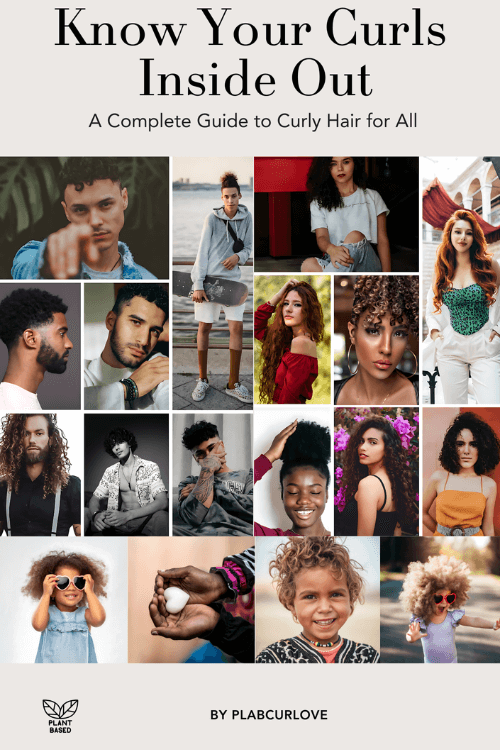Blog
How to Care for Curls: Porosity

When it comes to the curly hair community, understanding porosity is key to unlocking your hair’s full potential. High or low porosity hair can affect moisture retention, product effectiveness, and overall hair health. Ready to show your curls some love and attention they truly deserve? Dive into this ultimate guide on ‘How to Care for Curls: Porosity’, that will make your curls shine!
What does hair porosity mean and why is it important?
Understanding porosity is like holding the key to the kingdom of curls. It’s a measure of how well your hair can absorb and hold moisture and is determined by the condition of the cuticle layer. It matters because it explains why certain products may be perfect for one person and a flop for another.
Breaking Down Porosity
High porosity hair has a raised cuticle structure that absorbs moisture quickly but has difficulty retaining it. On the other hand, low porosity hair has a tightly bound cuticle layer, making it resistant to moisture but also hard for oils to penetrate. Porosity will influence your hair regimen, from washing techniques to styling.
Is plant-based hair care the way to go for porous curls?
Plant-based products can be a game-changer for those with porous curls. They often nourish hair without clogging up the cuticles that are already too open, and can seal in moisture without weighing down low porosity hair.
The Power of Plants
Ingredients like aloe vera, coconut oil, and shea butter mimic the sebum our scalp naturally produces, maintaining a healthy moisture balance. They’re lighter, more absorbent, and less likely to build up, making plant-based products especially beneficial for curly hair.
Crafting the perfect routine for high porosity curls
High porosity curls need extra TLC. From washing to styling, your routine should be tailored to preserve moisture and strengthen your hair cuticles.
Cleansing without Stripping
Shampoos with sulfate-free formulas can gently clean hair without further lifting the cuticle. Co-washing (washing with conditioner) can be a high porosity curl’s best friend, providing the slip it needs to minimize damage during detangling.
Deep Conditioning and Sealing
Weekly deep conditioning treatments are non-negotiable. Opt for a treatment rich in emollients and humectants like flax gel or vegetable glycerin to restore moisture. After conditioning, lock in the hydration with the L.O.C. (liquid, oil, cream) or L.C.O. (liquid, cream, oil) method that best suits your hair type.
Styling for Strength
When styling, be gentle to avoid breakage. Use a T-shirt or microfiber towel to blot excess water from your hair instead of roughing it up with a regular towel. Style with products designed to repair, protect, and add more structure to the hair strand.
Balancing act for low porosity hair
For those with low porosity curls, the focus is on opening the cuticle just enough to allow moisture in, but not too far that it can’t retain it.
Inviting Hydration
Apply products on damp, not wet, hair. Warm water can help to open the cuticle slightly, allowing products to penetrate. Steam treatments can also be beneficial for a more thorough conditioning.
Lighter Formulations
Opt for lighter, liquid-based products that won’t weigh your hair down. Look for ingredients like water, aloe vera, or lightweight oils such as argan or grapeseed.
Regular Cleansing is Key
Regular but not too frequent washing with a clarifying shampoo can prevent product buildup that plagues low porosity curls. Apple cider vinegar rinses can also be helpful in removing buildup and closing the cuticle after conditioning.
The versatility of medium porosity hair
Medium porosity hair is often the goal for many curl enthusiasts. This balance allows hair to absorb and retain moisture effectively, making the routine less complex but still essential.
Maintain the Balance
Avoid extremes in your hair care routine. Too much protein can make your hair stiff, while too little can make it weak. Aim for a balanced diet of protein and moisture treatments.
Select Wisely
Your hair can handle most products, so you have the freedom to select what works well for you. Be attentive to any signs of distress like excessive dryness or soft, spongy texture, as they may indicate a need to adjust your routine.
Consistency is King
Be consistent with your hair care. Regular trimming, a healthy diet, and a good hair care routine can help maintain the medium porosity and the overall health of your hair.
Celebrating the individuality of your curls
Each curl has its own unique porosity, and it’s this individuality that should be celebrated. What works for one type may not work for another, so it’s essential to tailor your routine to your specific needs.
Self-Discovery is Key
Experimentation is the only way to truly understand what your hair needs. Pay attention to how it responds to different treatments and products, documenting what works and what doesn’t.
Support Your Curls
Join curly hair communities, where you can learn from and support others on their hair care journeys. You might pick up game-changing techniques and advice that complement your routine perfectly.
The Journey, Not the Destination
When thinking about ‘How to Care for Curls: Porosity’, remember, the path to healthy, cared-for curls is an ongoing one. Be patient, be open to learning, and be proud of the progress you make along the way.
Ultimate Curly Hair Guide!

Transform your curls today with the ultimate guide to perfect curls—get your copy now! 🌀📚✨
Buy Now